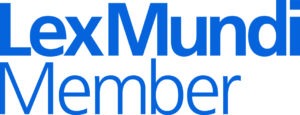In a recent notification by the Public Health Minister, Piyasakol Sakolsattayathorn, it was announced that the Ministry of Public Health’s National Tobacco Control Committee has approved a draft regulation requiring plain packaging to replace all current packaging for tobacco products. The stated reason for the change is concern that the current guidelines are no longer effective at addressing and combatting the health risks posed by tobacco products.
Thailand’s history with graphic health warnings (GHWs) on tobacco products—which spans more than 25 years—began in 1992 when it first mandated that GHWs cover 25% of product packaging. In the following years Thailand increased the GHW requirement to 33% in 1997, and 50% in 2005. Thailand further restricted tobacco companies’ ability to market tobacco products in 2006 by banning the use of descriptors such as mild, medium, and light. Then, in 2011, Thailand increased the scope of the descriptor ban to also restrict words and phrases indicating the smell, taste, or quality of tobacco products (e.g., crisp, fresh, and mint). The current legal guidelines require tobacco products to display graphic health warnings covering 85% of the packaging.
The Public Health Minister has stated that plain packaging will be standard for all brands of cigarettes and will prohibit the use of distinctive logos or colors on packaging, including the use of brand images and promotional text. Brand owners will be required to display brand names and product names in a standard color and font style to be prescribed by the regulation. These changes are designed to further reduce the desirability of tobacco products by making them look as unattractive as possible.
This change will make Thailand the first country in Asia and the 11th in the world to adopt plain packaging legislation in an attempt to further discourage cigarette smoking. This regulation has obvious consequences for brand owners in the tobacco industry in that it will reduce their ability to market and distinguish their brands through use of their registered intellectual property. This may have the unfortunate consequence of inadvertently promoting the use of counterfeit products in the marketplace, by removing many of the barriers to entry that distinctive product packaging imposes on manufacturers of knock-off products. Standardizing all product packaging will make it easy for counterfeiters to replicate well-known brands, increasing the likelihood that consumers will be unable to distinguish between genuine and counterfeit products. As a result, unknowing consumers may face increased health risks from the use of untested products of dubious origin.
The new regulation may be vulnerable to challenge by trademark owners as an unfair taking without compensation based on their property interest in their registered intellectual property. Section 44 of the Thai Trademark Act provides a positive right to use a registered trademark: “a person who is registered as the owner of a trademark shall have the exclusive right to use it for the goods for which it is registered.” Unlike the trademark laws of some other jurisdictions which grant only a negative right to exclude infringing uses by others, the Thai Trademark Act grants a positive right to use a registered mark, conferring a property interest to the trademark owner. As a result, owners of registered trademarks for tobacco products are likely to challenge the application of the new law.
The new regulation is expected to come into effect on September 12, 2019.
This article was first published by World Trademark Review on February 5, 2019 and is reproduced here with thanks.





